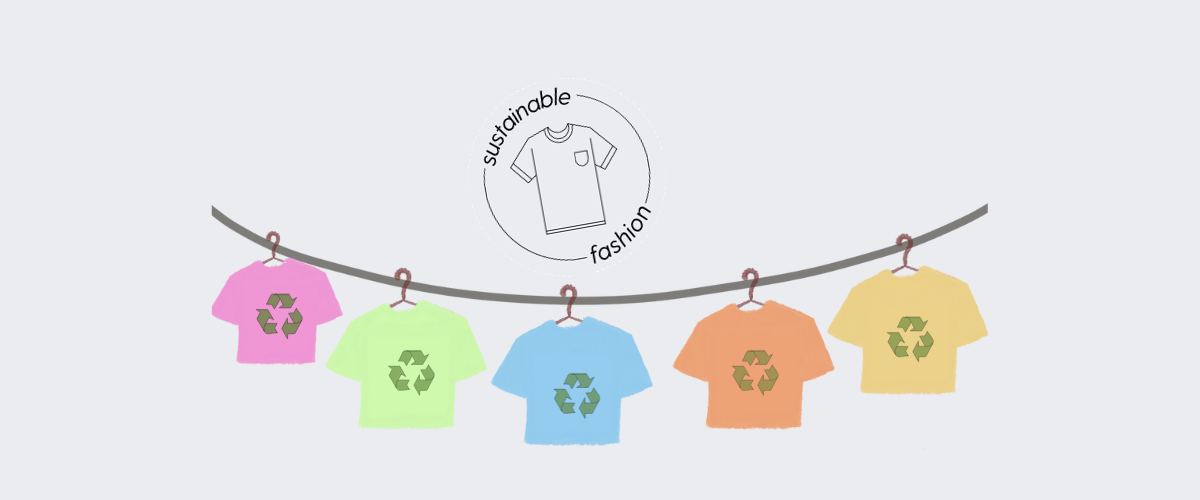Biodegradable Clothing: Saving the Planet in Style

In a world of pressing environmental concerns, the fashion industry is embracing a transformative trend that transcends mere aesthetics. Biodegradable clothing has emerged as a beacon of hope, offering an innovative solution to address the ecological repercussions of fashion. This movement champions garments and textiles created from materials capable of natural decomposition, thereby reducing the strain on landfills and ecosystems.
Biodegradable clothing primarily relies on organic sources like plant fibers (such as cotton, hemp, and bamboo) and biodegradable polymers, occasionally incorporating recycled textiles into its production process. By opting for such eco-friendly materials, this trend circumvents the environmental dilemmas associated with non-biodegradable synthetic fabrics like polyester and nylon, which contribute to pollution and resource depletion.
This introduction delves into the escalating significance of biodegradable clothing and its pivotal role in driving sustainability within the fashion industry. By advocating responsible consumption and production while simultaneously combating textile waste, this trend embodies the ethos of eco-consciousness and conservation, paving the way for a more sustainable and earth-friendly future.
Definition of biodegradable clothing
Biodegradable clothing consists of textiles that naturally decompose in the environment, lessening their impact on landfills and ecosystems. These materials are usually sourced from organic materials like plant fibers (e.g., cotton, hemp, bamboo), biodegradable polymers, or recycled textiles. The primary aim of biodegradable clothing is to reduce the fashion industry’s environmental footprint by decreasing the use of non-biodegradable synthetics like polyester and nylon. It serves as a sustainable fashion choice, endorsing responsible consumption and production while tackling textile waste. In essence, biodegradable clothing aligns with eco-friendly and sustainable fashion principles (Source: Fletcher, 2013).
The importance of sustainable fashion
Sustainable fashion has emerged as a pivotal response to the environmental challenges confronting the fashion industry. Its critical importance is highlighted by a range of factors, from resource depletion to waste generation, making it a global concern.
Resource Depletion:
Traditional fashion production is notorious for its excessive consumption of vital resources like water, land, and energy. Sustainable fashion, as acknowledged by industry experts, seeks to curb this overconsumption through eco-friendly materials and practices. This approach not only conserves resources but also reduces the industry’s ecological footprint.
Waste Generation
The fashion sector is infamous for generating substantial textile waste. Reports and studies, exemplified by the European Commission’s “Textile Environmental Footprint,” underscore the magnitude of this problem. Sustainable fashion actively addresses this issue by championing recycling and upcycling initiatives, effectively extending the lifespan of clothing and minimizing waste.
Chemical Pollution
The dyeing and finishing processes in the fashion industry have adverse environmental effects, leading to chemical pollution in waterways. Sustainable fashion encourages eco-friendly dyes and more sustainable manufacturing methods. This aligns with research findings emphasizing the importance of reducing chemical pollution in the fashion sector.
Circular Economy
Sustainable fashion is increasingly intertwined with the concept of a circular economy. This approach, as outlined in the Ellen MacArthur Foundation’s report “A New Textiles Economy: Redesigning Fashion’s Future,” envisions a system where clothing is designed for longevity, repairability, and recyclability. By extending the lifecycle of garments and reducing waste, the fashion industry can make significant strides in sustainability. The transition towards a circular economy in fashion is driven by the need to minimize environmental impacts and create a more sustainable and ethical industry.
Recycling
Sustainable fashion and recycling are closely intertwined as recycling plays a pivotal role in reducing the environmental impact of the fashion industry. Initiatives like clothing take-back programs and textile recycling, as discussed in the Global Fashion Agenda’s “CEO Agenda 2020: Sustainability Progress Report,” promote the reprocessing of textile waste into new garments, thereby extending the life of materials and reducing the industry’s reliance on new resources. Recycling in sustainable fashion contributes to a more responsible and environmentally conscious approach to clothing production, aligning with the industry’s commitment to reducing waste and conserving resources.
Fast Fashion Culture
Research, including reports such as “Pulse of the Fashion Industry” by the Global Fashion Agenda and The Boston Consulting Group, exposes the fast fashion culture as a driver of overconsumption, resulting in increased waste and emissions. Sustainable fashion promotes a shift towards a culture of conscious consumption, focusing on quality, durability, and timeless clothing choices.
Exploitative Labor Practices
Sustainable fashion research consistently underscores the need for ethical labor practices. The “Fashion Revolution 2019 Update” report sheds light on exploitative labor practices within the industry and advocates for fair wages and improved working conditions for garment workers.
Microplastic Pollution
Synthetic fabrics release microplastics during laundering, contributing to environmental contamination. Sustainable fashion addresses this issue by advocating for natural and biodegradable fibers as a solution to mitigate microplastic pollution.
Sustainable fashion’s significance in addressing environmental issues within the industry is supported by extensive research and expert consensus. It offers a comprehensive approach to reducing the fashion sector’s ecological footprint, promoting responsible resource management, waste reduction, ethical production, and a cleaner, more sustainable future for the fashion industry.
Biodegradable Clothing Materials
Biodegradable clothing materials are integral to advancing sustainability in the fashion industry. These materials can naturally decompose, diminishing the environmental footprint and fostering a circular, eco-conscious fashion ecosystem. Notable biodegradable clothing materials encompass:
- Cotton: Natural plant-based fiber; widely used
- Hemp: Fibers derived from Hemp plant; durable and sustainable
- Bamboo: Pulp of Bamboo plants; softness and breathability
- Linen: Sourced from flax plant; lightweight and moisture-wicking
- Wood: Natural fiber obtained from sheep’s fleece; warmth and insulation
- Tencel (Lyocell): Fiber made from sustainably sourced wood pulp and eucalyptus trees
- Ramie: Sourced from Chinese nettle plant; durable and resistant to mold and mildew
- Recycled Textiles: Made from recycled textiles, such as upcycled garments or repurposed fabrics
- Polylactic Acid (PLA) Fabric: Derived from fermented plant starch, primarily corn
These materials are favored in sustainable and eco-friendly fashion as they reduce the environmental impact of the clothing industry by breaking down naturally, unlike non-biodegradable synthetic fabrics like polyester and nylon.
Cost of biodegradable clothing
The cost of biodegradable clothing can vary significantly depending on various factors, including the type of material used, the brand, and the production methods. Generally, biodegradable clothing is considered more expensive than conventional, non-biodegradable alternatives due to the sustainable and eco-friendly practices involved in its production. Eco-conscious brands may invest in ethical labor practices, eco-friendly dyes, and responsible sourcing of materials, which can contribute to higher prices. However, it’s essential to note that the cost of biodegradable clothing is gradually decreasing as sustainable practices become more widespread in the fashion industry, making it increasingly accessible to a broader range of consumers.
Benefits of Biodegradable Clothing
Biodegradable clothing offers numerous advantages, profoundly impacting sustainability in the fashion industry. One primary benefit is its minimal environmental footprint. Biodegradable materials, such as organic cotton, hemp, and bamboo, naturally decompose, diminishing the accumulation of non-biodegradable synthetic fabrics in landfills. Additionally, these materials typically require fewer chemical inputs during cultivation, reducing pollution and conserving critical resources like water.
Another noteworthy advantage is the comfort and breathability of biodegradable clothing. Natural fibers like organic cotton and bamboo offer a gentle, skin-friendly touch and superior air circulation, making them ideal choices for hot and humid climates. What’s more, these materials are hypoallergenic, catering to individuals with sensitive skin and promoting overall well-being.
Opting for biodegradable clothing further underscores one’s commitment to ethical and sustainable fashion practices. Brands prioritizing biodegradable materials often adhere to responsible sourcing and production methods. This includes fair wages, safe working conditions, and environmentally friendly dyeing processes, aligning with consumer values, and promoting a socially responsible fashion industry.
Durability and care requirements
Biodegradable clothing, despite its eco-friendly nature, may necessitate specific care to maintain its durability. Natural fibers like organic cotton, hemp, and bamboo are typically robust, potentially outlasting their synthetic counterparts. However, they may be prone to wrinkles, demanding gentle washing methods for optimal longevity. To ensure the endurance of these biodegradable materials, it’s advisable to employ mild detergents, and cold water, and minimize harsh agitation during washing to reduce wear and tear. It’s essential to handle biodegradable fibers with care, as excessive use of chemicals or harsh laundering can compromise their environmental benefits. By adhering to appropriate care guidelines, these garments can retain their durability and effectively contribute to sustainable fashion practices.
Future Trends and Innovations
The future of biodegradable clothing holds promising trends and innovations. As sustainability becomes paramount, more brands are expected to embrace biodegradable materials, reducing reliance on synthetic fabrics. Innovations in material engineering will likely yield biodegradable alternatives with enhanced durability and performance. Biodegradable activewear and sportswear are likely to gain popularity as eco-conscious consumers seek sustainable options in all aspects of their lives. The integration of smart and responsive biodegradable materials may also offer functional clothing that adapts to various conditions. Overall, biodegradable clothing is set to expand its presence in the fashion industry, driven by innovation, environmental awareness, and consumer demand.
Consumer Awareness and Education
Consumer awareness and education about biodegradable clothing are essential for fostering sustainable fashion practices. Reputable sources like the Sustainable Apparel Coalition (sustainableapparelcoalition.org) and the Ellen MacArthur Foundation (ellenmacarthurfoundation.org) provide valuable insights into the benefits of biodegradable materials and their role in reducing fashion’s environmental impact. Brands are increasingly transparent about their sustainable practices, sharing information on biodegradable fabrics and certifications like the Global Organic Textile Standard (GOTS). Social media platforms, blogs, and influencers also play a pivotal role in educating consumers about biodegradable clothing, creating a broader understanding of its significance, and encouraging eco-conscious purchasing decisions.
Examples of Eco-friendly Fashion Brands
Several eco-friendly fashion brands lead the way in sustainability, including Patagonia, known for ethical practices and recycled materials. Eileen Fisher emphasizes responsible sourcing and circular design. Reformation champions eco-conscious practices, offering stylish, sustainable clothing. Veja focuses on eco-friendly sneakers using sustainable materials. These brands set industry standards for sustainable fashion. Some others are:
- Stella McCartney
- Allbirds
- People Tree
- Amour Vert
- Pact
- Thought
Conclusion
In conclusion, biodegradable clothing signifies a remarkable shift towards a more sustainable and eco-conscious fashion industry. With its focus on natural decomposition, biodegradable materials, and responsible production, this trend embodies the ethos of environmental stewardship. It’s a significant step toward a greener and more responsible future for the fashion world, aligning with global efforts to combat environmental challenges.
Source:
- Fletcher, K. (2013). Sustainable fashion and textiles: design journeys Routledge.
- Forbes, Sustainable Fashion As Oxymoron: Interrogating Your Business Practices






